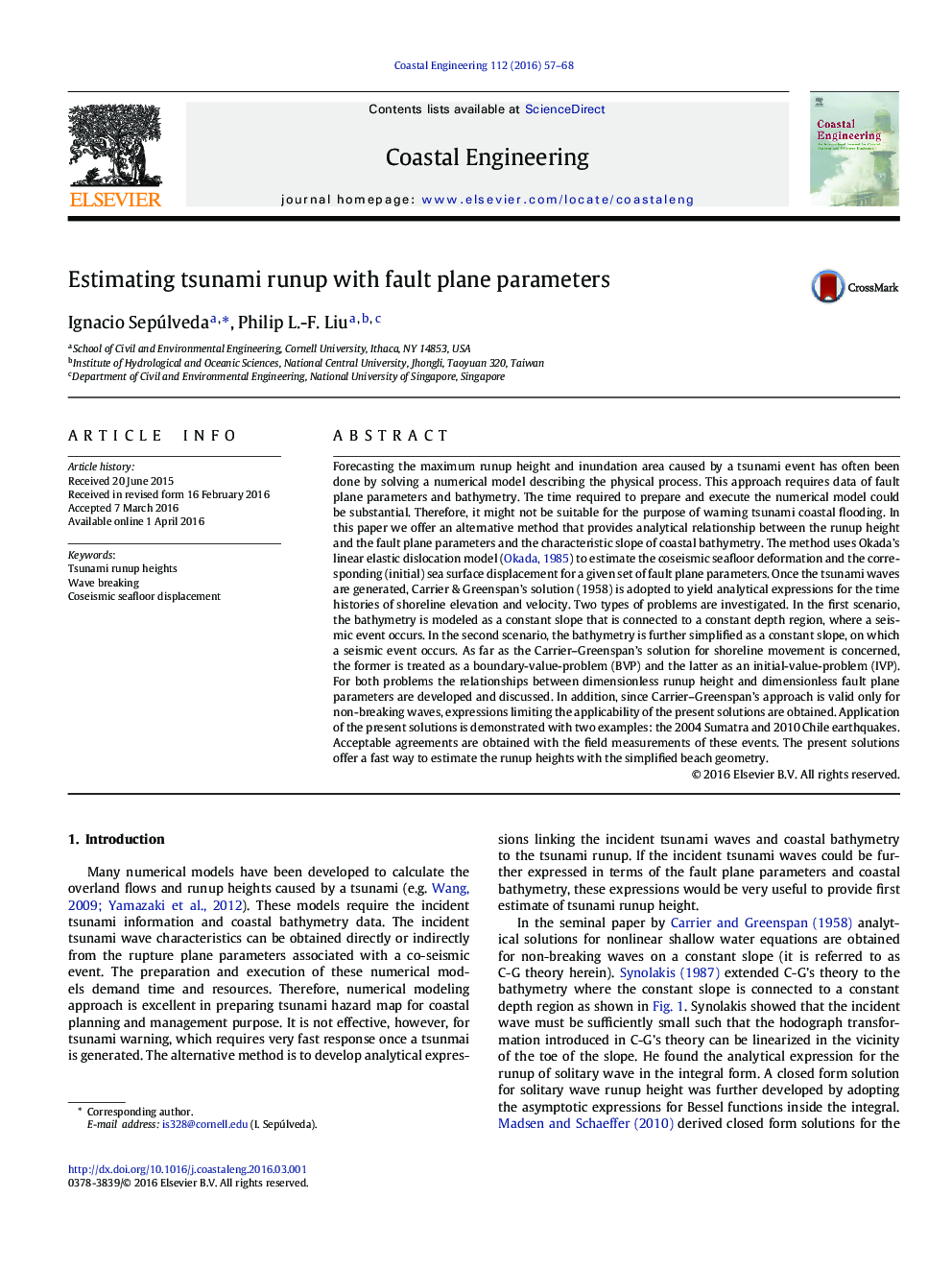| Article ID | Journal | Published Year | Pages | File Type |
|---|---|---|---|---|
| 1720562 | Coastal Engineering | 2016 | 12 Pages |
•An alternative method providing a relationship between tsunami runup, fault parameters and slope of the coast is presented.•Two types of scenarios are analyzed with different coastal geometries and earthquake locations.•Breaking conditions are derived in terms of fault plane parameters and bathymetry slope as well.•Two examples are shown, demonstrating the applicability of the present method for recent tsunami events.
Forecasting the maximum runup height and inundation area caused by a tsunami event has often been done by solving a numerical model describing the physical process. This approach requires data of fault plane parameters and bathymetry. The time required to prepare and execute the numerical model could be substantial. Therefore, it might not be suitable for the purpose of warning tsunami coastal flooding. In this paper we offer an alternative method that provides analytical relationship between the runup height and the fault plane parameters and the characteristic slope of coastal bathymetry. The method uses Okada's linear elastic dislocation model (Okada, 1985) to estimate the coseismic seafloor deformation and the corresponding (initial) sea surface displacement for a given set of fault plane parameters. Once the tsunami waves are generated, Carrier & Greenspan's solution (1958) is adopted to yield analytical expressions for the time histories of shoreline elevation and velocity. Two types of problems are investigated. In the first scenario, the bathymetry is modeled as a constant slope that is connected to a constant depth region, where a seismic event occurs. In the second scenario, the bathymetry is further simplified as a constant slope, on which a seismic event occurs. As far as the Carrier–Greenspan's solution for shoreline movement is concerned, the former is treated as a boundary-value-problem (BVP) and the latter as an initial-value-problem (IVP). For both problems the relationships between dimensionless runup height and dimensionless fault plane parameters are developed and discussed. In addition, since Carrier–Greenspan's approach is valid only for non-breaking waves, expressions limiting the applicability of the present solutions are obtained. Application of the present solutions is demonstrated with two examples: the 2004 Sumatra and 2010 Chile earthquakes. Acceptable agreements are obtained with the field measurements of these events. The present solutions offer a fast way to estimate the runup heights with the simplified beach geometry.
